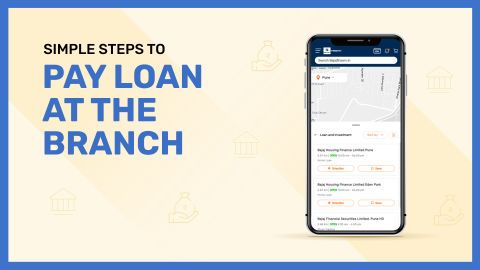Understanding loan against securities transfer: Is it possible?
Yes, a loan against securities transfer (last) is not only possible but also increasingly popular among investors looking to access liquidity without selling their investments. It is a form of secured loan where an individual pledges financial instruments like shares, mutual funds, bonds, or other market-linked securities as collateral. In return, the lender offers a loan amount based on the market value of these securities, typically up to a certain percentage, ranging between 50% to 80%.The concept of securities transfer comes into play when these investments are temporarily transferred to the lender’s demat account or placed under a lien, serving as security for the loan. Importantly, you do not lose ownership of these assets; they continue to earn returns, dividends, and interest during the tenure of the loan, ensuring your long-term financial goals remain intact.
This financial product is especially useful for those who need urgent funds but do not wish to disrupt their investment strategy. Be it for funding a business venture, handling medical expenses, or managing short-term cash flow, Loan Against Securities offers a quick, hassle-free solution with minimal paperwork.
To avail of such a loan, the borrower must hold the pledged securities in dematerialized form. The process usually involves verification of the securities, signing an agreement, and transferring or marking a lien on the securities. Once these steps are completed, the loan amount is disbursed within a short time frame.
In conclusion, the transfer of securities for loan purposes is a viable and smart financial move for investors who want to stay invested while enjoying financial flexibility. It combines the benefits of secured loans with the earning potential of retained investments, making it a win-win option for smart financial planning.
Eligibility criteria for transferring loan against securities
To avail of a Loan Against Securities Transfer (LAST), certain eligibility criteria must be met by the borrower. These criteria ensure that the individual or entity has the financial credibility and appropriate investment portfolio to secure the loan. Below are the detailed eligibility requirements:Age requirement
The applicant must be at least 18 years of age.
Some lenders may set the upper age limit at 65 years, especially for individual borrowers.
Resident status
The applicant must be a resident Indian.
Non-Resident Indians (NRIs) may also be eligible in some cases, depending on the lender’s policy and RBI guidelines.
Ownership of securities
The applicant must own eligible securities such as:
Listed shares
Mutual fund units
Government bonds
Insurance policies (assigned)
National Savings Certificates (NSC)
Exchange-Traded Funds (ETFs)
These securities must be held in demat or physical form, as acceptable by the lender.
Type of account
A demat account is often mandatory for pledging securities.
The borrower may need to open a loan account and/or a current/savings account with the lending institution.
Minimum security value
Lenders usually require a minimum market value of securities to consider the loan, often ranging from ₹50,000 to ₹1,00,000.
Good credit history
A healthy credit score (CIBIL score) may be considered to assess repayment capability.
However, since this is a secured loan, the credit score might be a secondary criterion for approval.
Income proof (Varies by lender)
Some financial institutions may request income documents, especially if the borrower is self-employed or the loan amount is high.
Lien or transfer readiness
The borrower must agree to mark a lien or transfer securities temporarily to the lender’s account for the loan tenure.
Meeting these eligibility criteria is essential for smooth approval and disbursal of the loan against securities transfer.
How to transfer a loan against securities: Step-by-step guide
Transferring a Loan Against Securities (LAS) involves a structured process where you pledge your financial assets to avail credit. Here's a step-by-step guide to help you understand and smoothly complete the transfer process:Step 1: Identify eligible securities
Begin by checking which of your investments qualify for a loan.
Typically accepted securities include equity shares, mutual fund units, bonds, ETFs, insurance policies, and government securities.
Ensure they are held in demat or physical form, as per lender requirements.
Step 2: Choose the right lender
Compare offerings from various banks, NBFCs, and financial institutions.
Look into aspects like interest rates, loan-to-value (LTV) ratio, processing fees, tenure, and repayment flexibility.
Step 3: Check eligibility criteria
Confirm if you meet the age, residency, demat account, and minimum security value requirements.
Some lenders may require a good credit score or income documents, especially for large loan amounts.
Step 4: Open necessary accounts
If you don’t already have a demat account, open one with a depository participant.
Some lenders may also require you to hold a loan account or bank account with them.
Step 5: Submit application form
Fill out the Loan Against Securities application form either online or offline.
Provide the required details, including PAN, Aadhaar, investment portfolio, and contact information.
Step 6: Pledge or transfer securities
Pledge your securities by marking a lien in the lender’s favour or transferring them temporarily to the lender’s demat account.
This step usually requires authorisation through your demat service provider.
Step 7: Verification and valuation
The lender will verify the pledged securities and calculate the loan amount based on market value and LTV ratio.
Approval time may range from a few hours to 1-2 working days.
Step 8: Loan disbursal
Once approved, the loan amount is disbursed directly to your linked bank account.
You can then use the funds for any personal, professional, or emergency needs.
Following these steps ensures a hassle-free transfer process and enables you to access quick liquidity while keeping your investments intact.
Documents required for loan against securities transfer
When applying for a Loan Against Securities Transfer (LAST), submitting the correct documentation is essential for swift approval and disbursal. While the exact list may vary slightly across lenders, here are the standard documents you’ll typically need:KYC documents
PAN Card – Mandatory for identity verification and tax purposes.
Aadhaar Card – Used for identity and address proof.
Passport/Driving License/Voter ID – Accepted as additional identity or address proof.
Photographs
Recent passport-size photographs of the applicant (typically 1–2 copies).
Proof of address (if not using Aadhaar)
Utility bills (electricity, water, telephone)
Ration card or rent agreement
Bank account statement with current address
Demat account details
Demat account statement showing ownership of the pledged securities.
Required for lien marking or transfer of securities.
Ownership proof of securities
Statement of holdings for mutual funds, shares, bonds, etc.
NSDL/CDSL reports for dematerialized assets.
Bank account proof
Cancelled cheque or bank passbook copy for loan disbursal.
Bank statement may be required for the last 3–6 months.
Income proof (varies by lender)
Salaried individuals: Salary slips or Form 16
Self-employed individuals: Income Tax Returns (ITR), Profit & Loss Statement
Some lenders waive this if the security value is sufficient.
Loan application form
Duly filled and signed Loan Against Securities application form.
Signed agreement
A loan agreement that outlines terms, interest rates, tenure, and a repayment schedule.
Ensuring all documents are complete and valid will streamline the approval process and avoid unnecessary delays.
Charges for transferring loan against securities to another person
Transferring a Loan Against Securities (LAS) to another person, whether due to internal restructuring, ownership change, or gifting of investments, involves several legal and administrative charges. Below is a detailed breakdown of the key charges and fees you may encounter during the process:Loan transfer fees
Lenders may charge a processing or transfer fee for updating loan details and approving the transfer to another individual.
This fee typically ranges from ₹500 to ₹5,000, depending on the loan amount and institution.
Stamp duty
Stamp duty is applicable on the transfer of loan agreements and lien documents.
Charges vary by state and are usually calculated as a percentage of the loan value or agreement value (e.g., 0.1% to 0.5%).
In some states, flat-rate stamp duties apply for loan documentation.
RTO Charges (Registration transfer charges)
While RTO charges primarily apply to vehicle loans, in specific structured asset transfers involving movable secured assets, RTO verification might be necessary.
These charges are only applicable in rare cases where securities are part of a registered movable asset.
Legal fees
If the loan transfer involves a legal contract or third-party notarisation, you may incur legal consultation fees.
These may include lawyer fees for drafting the loan reassignment deed, usually ranging between ₹2,000 to ₹10,000.
Charges increase for complex or high-value portfolios.
Insurance premium
Some lenders require an insurance policy to be in place as part of the loan security package.
On transfer, a new insurance premium may be applicable if the original policy doesn’t cover the new borrower or if the policy needs reassignment.
Premiums depend on the loan amount and duration, and may range from 0.5% to 2% of the loan amount.
Lien re-marking or re-pledging charges
The demat account provider or depository may charge nominal fees (₹100 to ₹500) for removing and reapplying the lien in the new borrower’s name.
Each of these charges should be clearly discussed with the lender before initiating the transfer to avoid hidden costs and ensure a smooth legal transition of the loan.
Benefits of transferring loan against securities to another person
Transferring a Loan Against Securities (LAS) to another person can offer strategic, financial, and operational advantages in certain scenarios. Whether it’s between family members, business partners, or in case of asset reallocation, here are the key benefits:Maintains continuity of investments
The pledged securities remain invested, ensuring market-linked returns continue, even as the borrower changes.
Reduces borrower’s financial burden
By transferring the loan, the original borrower can offload repayment responsibilities and free up their credit capacity.
Flexibility in financial planning
It allows for better distribution of financial responsibilities, especially in family-owned portfolios or joint ventures.
Quick Access to funds for the new borrower
The incoming borrower can get instant liquidity without going through a fresh loan application process from scratch.
Retains tax benefits (if applicable)
In certain cases, the new borrower can claim tax deductions on interest paid, provided the loan is used for eligible purposes.
Avoids prepayment charges
Instead of closing the existing loan with prepayment penalties, a transfer offers a cost-effective alternative.
Ideal for business restructuring
Useful in scenarios where business entities are being merged, split, or restructured — ensuring smooth transition of financial obligations.
Supports better loan recovery strategy
If the original borrower is struggling with repayments or has a loan overdue, transferring it to a financially stable individual can prevent loan defaults.
Opportunity to negotiate new terms
The new borrower may get the chance to renegotiate loan terms such as interest rate or tenure based on their profile.
Eases burden in emergency situations
In case of health issues or financial stress, transferring the loan provides an alternative to how to clear loan fast without selling the investments.
Transferring a LAS can be a smart move when handled legally and with the lender’s consent.




